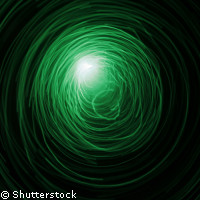EU-funded plastic fibre project could cut network costs
A European project using plastic fibre and off-the-shelf components could make optical networking so affordable and simple that installation could be a DIY job, making faster internet technology a reality. Currently, telecommunication networks around Europe use optical fibre, but the links from the exchange to individual homes remain almost entirely based on copper wire. Despite the best efforts of telecoms companies to push the limits of copper, through ADSL broadband technology and the TV cable infrastructure, taking optical fibre right into the homes of consumers could be the only way to meet their demands for ever-faster connections. However, this has been acknowledged as an impossible exercise, as ripping out the copper and laying optical fibre would be far too expensive. The objective the EU-funded POF-ALL project is to find a technical solution to the rising cost of taking optical fibre right into consumers' homes. The project partners decided to focus on the cabling inside buildings, which would typically account for 30% of the cost of laying an optical fibre from the exchange into the home. This last 100 metres or so is known as the 'edge' network. 'We realised that we could lower the cost of this edge installation by using a simpler technology,' says Alessandro Nocivelli, CEO of Luceat SpA, one of the partners in the project. 'If we could employ a technology which is so simple to use that anyone can install it, that would relieve telecom companies of 30% of the cost of the access network, which means up to several billion euro if you consider the European Union as a whole.' For the engineers in the project, the key to a simpler, cheaper edge network is optical fibre made of plastic rather than the more common glass, for a range of reasons. First of all, glass fibres use harmless infrared laser light to transmit the signal much faster. Secondly, they are robust. Plastic fibres are much thicker than glass fibres, a millimetre or more, and can be handled without special tools or techniques. According to the partners in the project, POF-ALL is already producing results. The partners have built a system that uses green light to transmit 100 Mbps over a distance of 300 metres, which is the speed telecom companies hope to offer their customers in five to 10 years from now, and 50 times as fast as a typical ADSL broadband connection. The second achievement, using red light, is to transmit a further 10 times faster - one Gbps - over a 30 metre fibre. By the end of the project, in June 2008, they expect to have extended that to 100 metres. 'Then, of course, we will try to focus on longer distances,' says Dr Nocivelli. 'We have already demonstrated that plastic fibre would be future-proof not only for the next 10 years, but for the next 30 years. With that speed in your home you could download a full DVD in 30 seconds.' The benefits for Europe of plastic optical fibre could be immense. Today, the market for optical network technology is dominated by US and Japanese firms, but Dr Nocivelli sees an opportunity for European companies to seize the initiative in the same way as they did for mobile phones. 'The GSM standard, which was developed in Europe, has been adopted almost worldwide. And, of course, this is the kind of success we are looking forward to,' he said.



